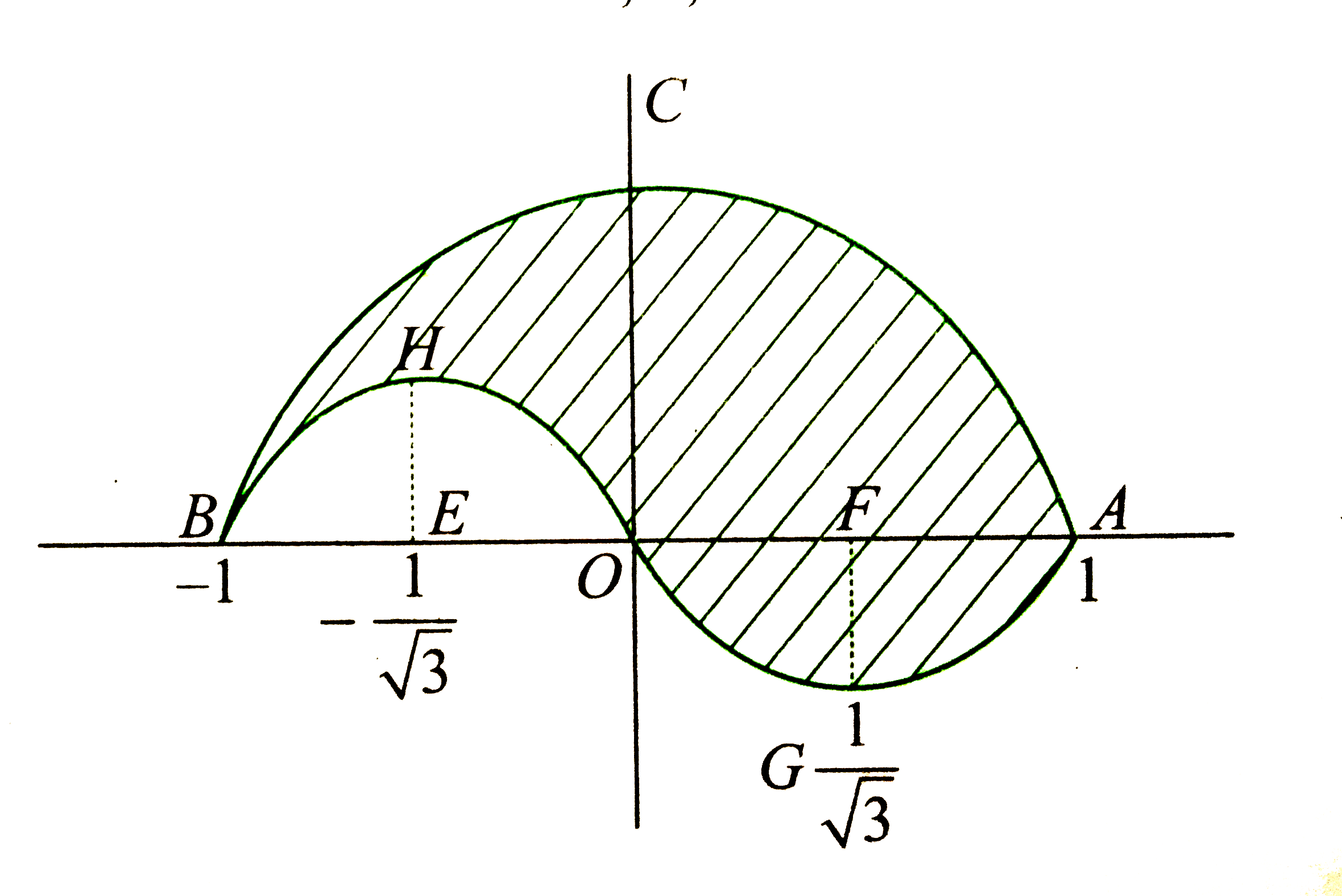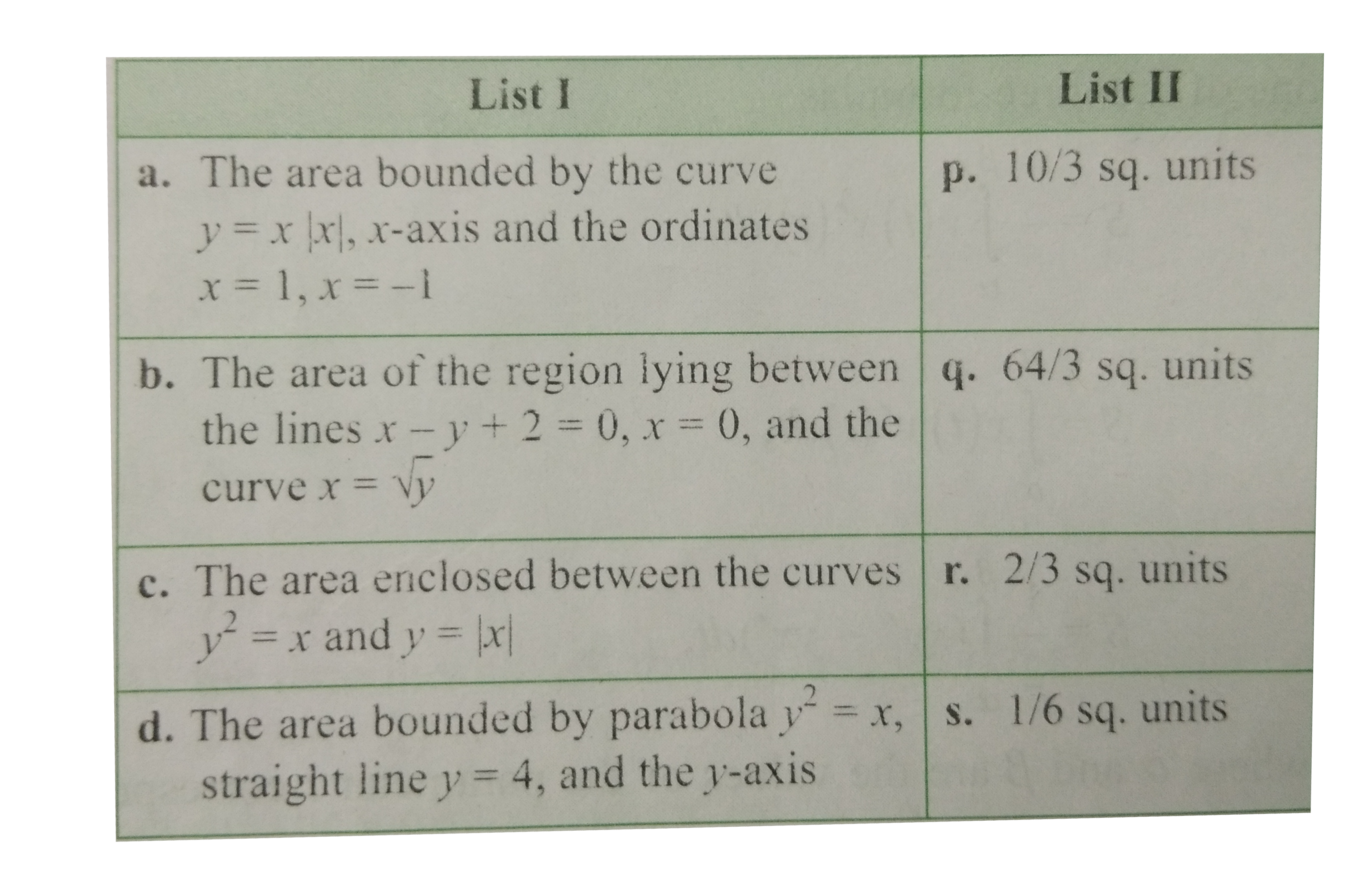If A is the area bounded by the curves y=√1−x2 and y=x3−x , then of πA.Solution in Tamil
The correct Answer is:2
y=√1−x2 (1)
y=x3−x (2)
y=0 in (2)x=0,1,−1

Required area = Area of region BCAGOHB
=Area of semi-circle BCAOB
=π2 (∵ area of BHOEB= area of OFAGO)
Topper's Solved these Questions
- AREABOOK - CENGAGECHAPTER - AREAEXERCISE - JEE Main Previous Year
10 Videos
- AREABOOK - CENGAGECHAPTER - AREAEXERCISE - JEE Advanced Previous Year
9 Videos
- AREABOOK - CENGAGECHAPTER - AREAEXERCISE - Exercise (Matrix)
4 Videos
- APPLICATIONS OF DERIVATIVESBOOK - CENGAGECHAPTER - APPLICATIONS OF DERIVATIVESEXERCISE - Subjective Type
2 Videos
- AREA UNDER CURVESBOOK - CENGAGECHAPTER - AREA UNDER CURVESEXERCISE - Question Bank
10 Videos
Similar Questions
The area of the figure bounded by the parabola (y−2)2=x−1, the tangent to it at the point with the ordinate y=3, and the x-axis is
View SolutionFind the area bounded by the curves x+2|y|=1 and x=0.
View SolutionMatch the following lists :

View SolutionProve that for λ>1, the equation xlogx+x=λ has least one solution in [1,λ].
View SolutionThe area of the region (s) enclosed by the curves y=x2 and y=√|x| is
View SolutionIf A is the area bounded by the curves y=√1−x2 and y=x3−x , then of πA.
View SolutionArea bounded by the curves y=x^(2)-1,x+y=3 is
View SolutionThe area bounded by the curves y=2-|2-x| and |x|y=3 is
View SolutionFind the area bounded by the curves y=√1−x2 and y=x3−x without using integration.
View SolutionThe area of the closed figure bounded by the curves
y=cosx,y=1+2πxandx=π/2, is
View SolutionArea under the curve y=xsinx2, bounded by the lines x = 0 and x=√π/2 is
View SolutionIf S is the area bounded byb the curve y =√1−x2 and y=x3−x then the value of πS is equal to-
View SolutionIf A is the area bounded by the curves y=√1−x2 and y=x3−x , then of πA.
View SolutionFind the area bounded by the curves y=√1−x2 and y=x3−x without using integration.
View SolutionIf A is the area bounded by the curves y=√1−x2 and y=x3−x , then of πA.
View Solution
